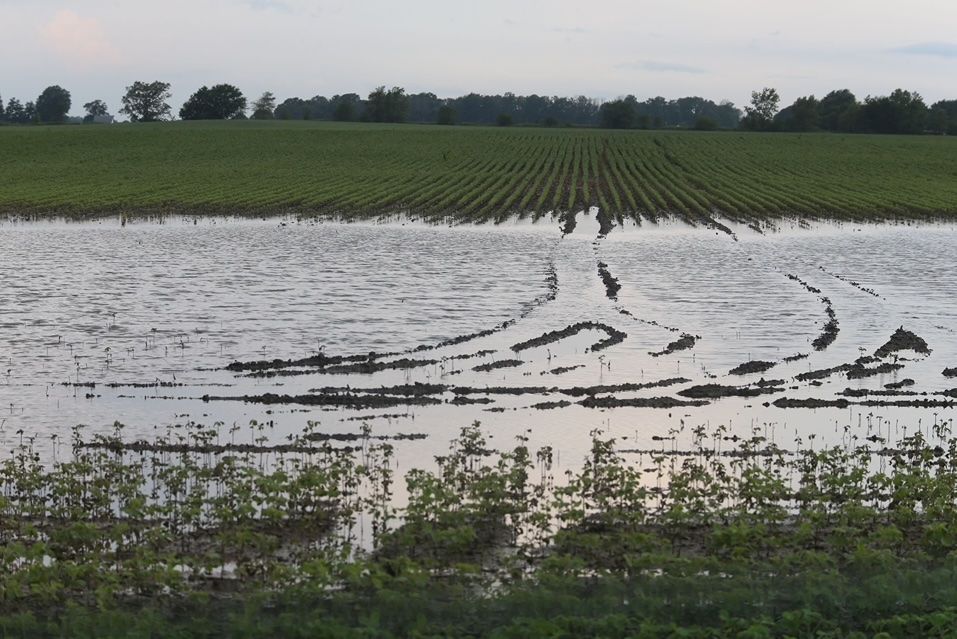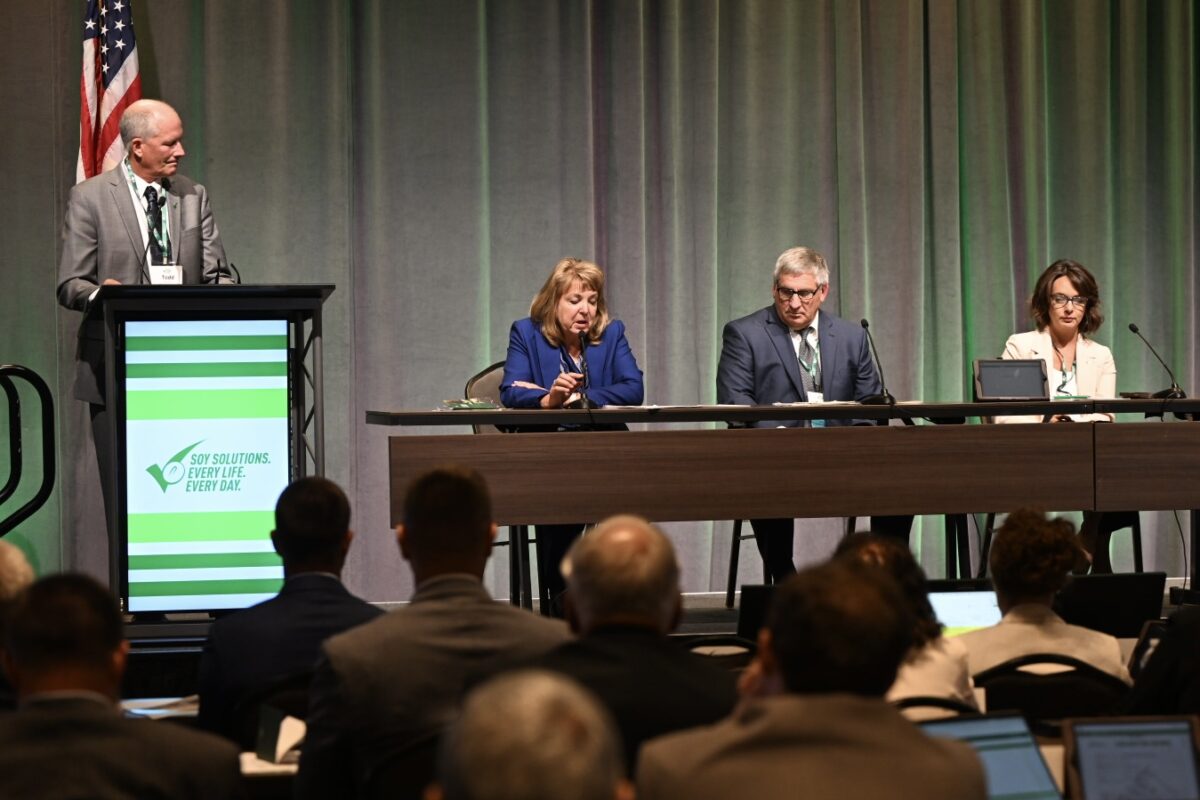Ag Tech Helps Farmers Help the Planet

Gone are the days of guessing when it would rain, relying on horses to plow fields and no radio in the tractor — thank goodness.
Today, with all manner of precision agriculture applications at your fingertips, you’re not only increasing efficiency and reducing inputs, you are also helping define and deliver sustainability for your customers.
“Technology has transformed farming in so many exciting ways, bringing innovation to the roots of our food supply chain,” says Laurie Isley, a soy checkoff farmer-leader and a fifth-generation Michigan farmer.
Isley and her family currently grow corn and soybeans. According to USDA data, corn and soybean farms have the highest adoption rate for precision agriculture technologies.
But the different types of technology aren’t used at the same rate. Take a look at USDA’s numbers:
- Yield monitors that produce the data for GPS-based mapping are the most widely adopted, used on about half of all corn and soybean farms.
- Guidance or auto-steer systems optimize input use on about a third of those farms.
- GPS-based yield mapping helps farmers maximize production and identify problem areas on 25% of corn and soybean farms.
- Soil maps using GPS coordinates help 16% of these farmers make decisions.
- Variable-rate tillage is used on 24% of these farms.
“We’ve evolved from farming by the farm to farming by the field to farming by the foot,” says Isley.
When you farm by the foot you’re creating a win-win for yourself, for end-users and for the planet, growing more soybeans with fewer resources while improving the environment for the next generation.
“As one of more than half a million farmers in the U.S. growing soy on more than 80 million acres of land, I am proud to say that we are some of the most sustainably-minded farmers in the country,” says Isley.
She isn’t alone in her passion for stewarding natural resources. About 95% of farmers participate in conservation programs and utilize sustainable farming practices.
“Sustainable stewardship is helping soybean farmers grow more food, fiber and fuel to support our rising global population while also driving sustainable outcomes that deliver healthier air, water and soil,” Isley adds.
Your checkoff is keeping pace with the food and feed companies that drive demand for your soybeans, making it clear how U.S. soybean farmers contribute to the sustainability goals many of them have set. The U.S. soybean industry developed its own goals to further reduce land use, soil erosion and greenhouse gas emissions while increasing energy efficiency by 2025, based on the significant progress farmers have already made in the past four decades. Between 1980 and 2020, conservation efforts by U.S. soybean farmers have improved:
- Land use efficiency by 48% per bushel.
- Irrigation water use efficiency by 60% per bushel.
- Energy use efficiency by 46% per bushel.
- Greenhouse gas emissions efficiency by 43% per bushel.
- Soil conservation by 34% per acre.
- Soy production by 130%, using roughly the same amount of land.
Understanding the impact of soybean farming on the environment allows your checkoff to prove the value of U.S. soybeans around the world, highlighting your climate-smart farming practices through communications like the Sustainability Overview Report and sharing the stories of farmers across the country like Isley.
“As a community, we take a lot of pride in the fact that we feed so many people, and our ability to become so much more efficient over the past 50 years is pretty incredible. That’s not a responsibility we take lightly. We want to grow safe, nutritious products that are raised in a way that promotes sustainability, leaving the land better than we found it,” says Isley.



